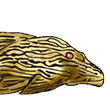new member here
Searched all internet around, till I came to this wonderful site.
Then searched the forums, but no luck finding what I am looking for...
So, this is my question.
I am building a peruvian biotope for some nice Apistogramma Bitaeniata.
In my research I found that the correct Otocinclus for this area should be Otocinclus Macrospilus... but in the aquarium shops scientific names for OTOs are often at random, and indeed I think that the several Otocinclus species are very very similar... too similar, actually, for my unexperienced eye.
So, what are the characteristics i should look for that distinguish one oto from the other one?
For example, Otocinclus Macrospilus and O. Mariae seem (to me) almost the same fish, but the first one come from Upper Amazon Basin of Colombia, Ecuador & Peru, the second one from Lower Amazon, Upper Madeira and Paraguay basins!!
If the shop can say where the fishes came from, there's no problem, but often fishes arrive in Italy passing through specialized importers in Netherlands and Germany... so no real info...
Thank you in advance for the help, and big congrats for the nice site and community!
PS Sorry for my poor english





